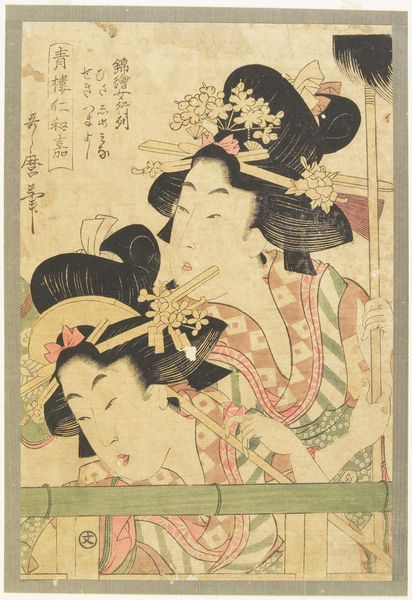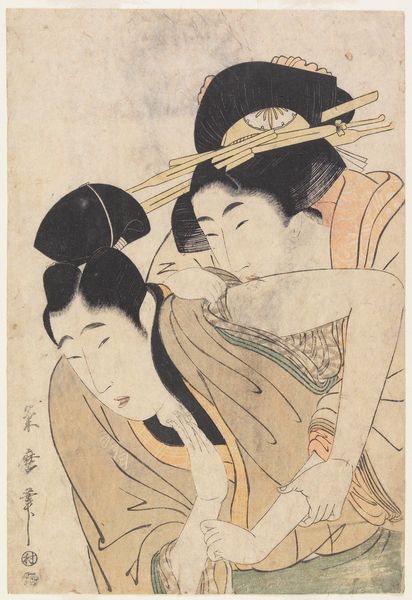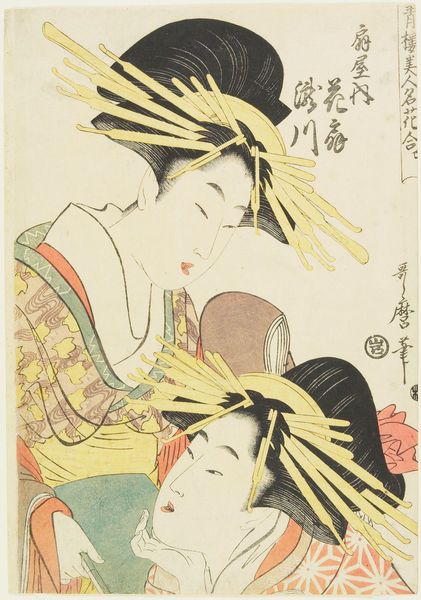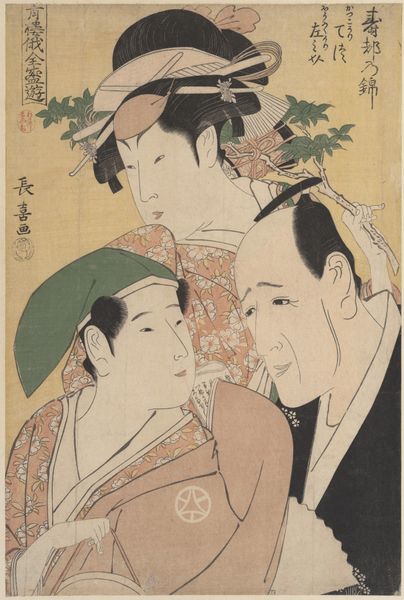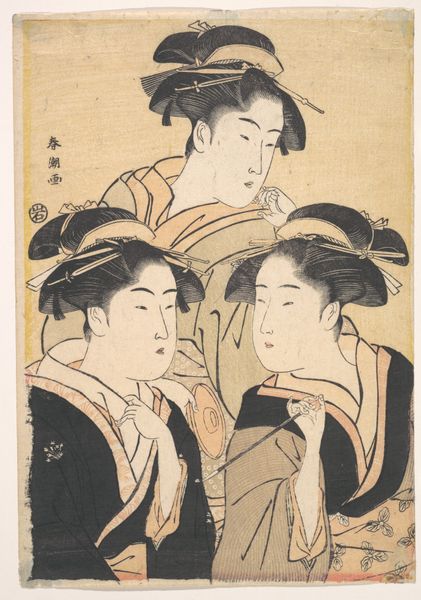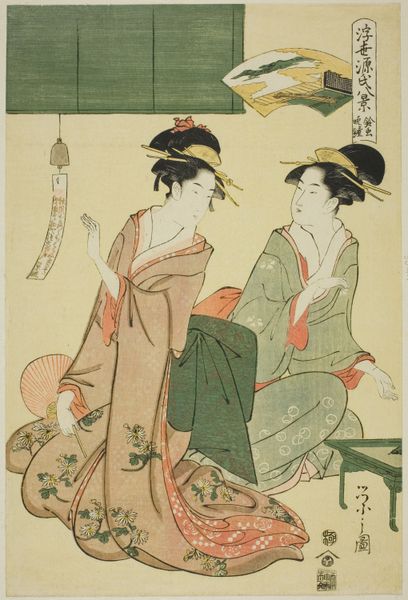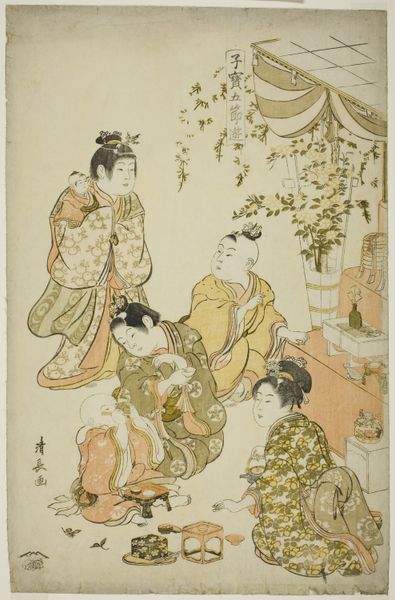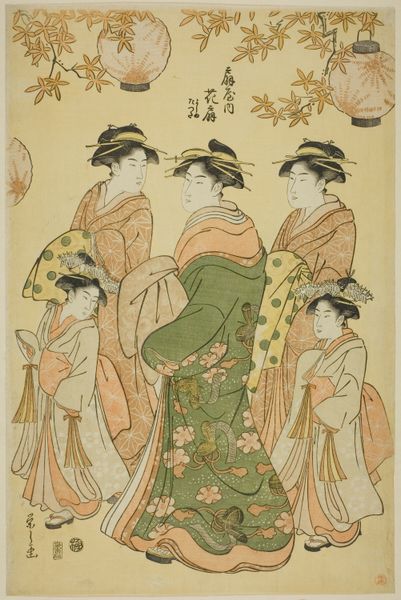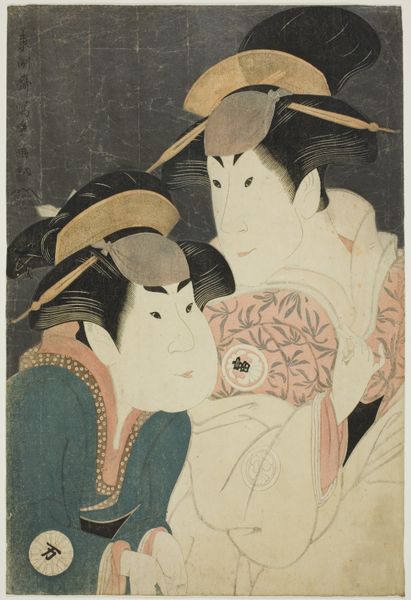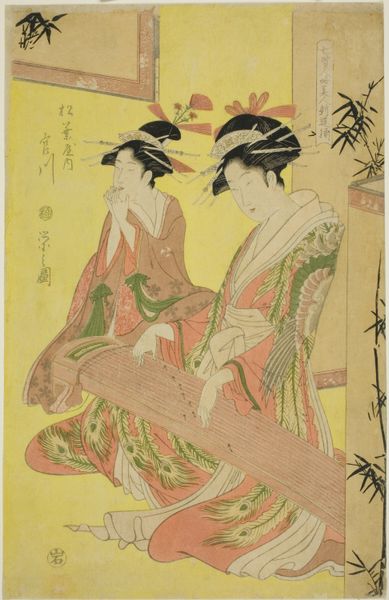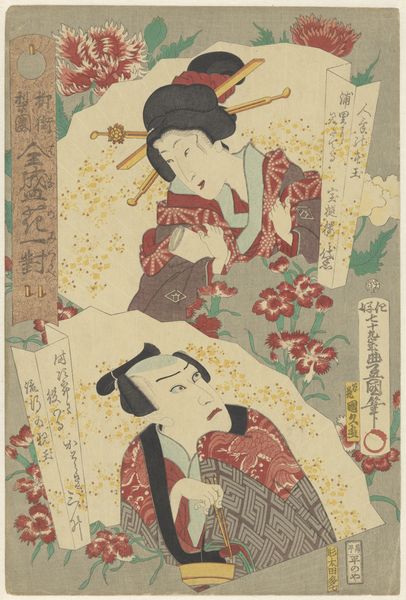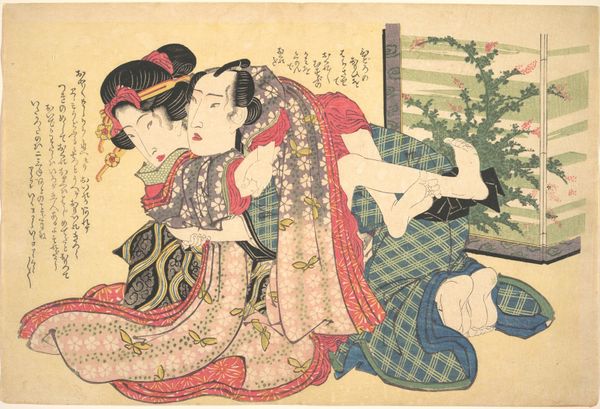
Two Prostitutes in the Roles of -Koi-shigure momiji no rodai- 1781 - 1806
0:00
0:00
print, paper, ink, woodblock-print
#
portrait
# print
#
ukiyo-e
#
japan
#
figuration
#
paper
#
ink
#
woodblock-print
#
genre-painting
#
erotic-art
Dimensions: 12 9/16 x 8 5/8 in. (31.9 x 21.9 cm) (image, sheet)
Copyright: Public Domain
Curator: What a captivating composition! At first glance, the interplay of colors strikes me – those muted pinks and greens contrasted with the stark black hair create an unexpectedly subtle tension. Editor: This print, entitled "Two Prostitutes in the Roles of -Koi-shigure momiji no rodai-," was created sometime between 1781 and 1806 by Kitagawa Utamaro. It's a woodblock print using ink and color on paper and part of the Minneapolis Institute of Art's collection. It’s an example of ukiyo-e, translated as “pictures of the floating world.” Curator: The "floating world" indeed! And that is encapsulated in the arrangement itself; it's a very sophisticated rendering of implied relationships, wouldn't you agree? The almost dreamlike arrangement creates that sense, this transience so crucial to Ukiyo-e. Editor: Absolutely. Note, too, how Utamaro has strategically positioned the figures and the mask, which appears to be from Noh theatre, behind what reads as a fence of green bamboo. The face seems at first like another companion, which given its striking otherness prompts deeper thinking about how class distinctions and gender operate in Japan. The mask has long been used to transform identity and conceal the player of stories; it might function similarly here. Curator: That mask is powerfully ambiguous; at once humorous, yet slightly unsettling, even demon-like! I wonder what that means in terms of social status, both as signifier, yet at the same time operating like a symbol. And also those golden and amber floral accents in the hair arrangements! These carefully curated images hint to more stories of identity performance that continue into present day. Editor: That is precisely how visual languages evolve – taking prior conventions and layering in new and topical resonances. Thank you for speaking to this important continuity; for now, we will allow listeners to form their own conclusions regarding Utamaro's message within this visually dynamic framework!
Comments
No comments
Be the first to comment and join the conversation on the ultimate creative platform.
